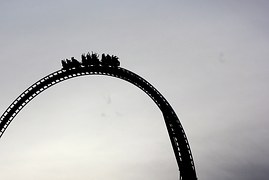By Dr Lyn McDonald
Following the tragedy that cost four lives at Dreamworld on October 24, 2016, when the Thunder River Rapids ride malfunctioned,  Dreamworld owners, Ardent Leisure, have been accused of failed crisis communication. Even Ardent Leisure CEO, Deborah Thomas, stated that she could have better handled the communication.
Dreamworld owners, Ardent Leisure, have been accused of failed crisis communication. Even Ardent Leisure CEO, Deborah Thomas, stated that she could have better handled the communication.
So what went wrong? The “5C rule” of crisis communication states that all communication – written, verbal, visual – must meet five criteria: care, commitment, consistency and coherence, and clarity.
- Care: the company must show that it cares about what happened and empathizes with those most deeply affected, in this case the families of those who died, then those who were traumatized: witnesses, first responders and emergency services, among them Dreamworld staff.
- Commitment to resolve the problem, find its cause and minimize any chances of a recurrence.
- Consistency and Coherence, ensuring that all spokespeople and all written communication give the same message.
- Clarity: Problems are explained in terms that are easy to understand by all stakeholders, and are free from jargon and scientific language.
The focus here is on the main crisis communication breach – minimal demonstrated care.
Initial communication
In a brief televised statement on the afternoon of the tragedy (Tuesday October 25) Dreamworld CEO, Craig Davidson’s statement opened with confirmation of the deaths, provided operational details (park closure, working with authorities to establish facts) followed by a statement of Dreamworld’s shock and sadness, finishing with “our hearts and thoughts go to families involved and their loved ones.”
Comment
- In the initial statement, those most deeply impacted – the families of those killed – were mentioned last, not first. No comment was made about the traumatized witnesses and first responders, including Dreamworld staff, although this was remedied in later statements.
- Company statements refer to the tragedy as “the incident”, as if to downplay its severity.
- The perceived lack of care was compounded by proposed plans to partially re-open Dreamworld three days after the “incident.” Even though it was for a memorial service, it was viewed as showing a lack of respect for those who died and their families.
- This re-opening had not been checked with the police who raised concerns about the on-site forensic investigations. The company’s back down was an embarrassment.
- At Ardent’s Annual General Meeting on October 26, Ms Thomas was caught stating that she had reached out to the bereaved families offering assistance. This was immediately disputed by a TV news reporter who had a member of one affected family listening in on the phone. Credibility was lost.
- At the AGM, Ms Thomas was asked about the tragedy’s impact on the bottom line. Unfortunately, she chose to answer this question. When people have been killed or injured, it is never wise to discuss the likely cost to the company.
- At this AGM, rather than delay approval of Ms Thomas’ $800,000+ bonus package for performance, the tactless decision was made to approve it.
Overall, the Dreamworld/Ardent response indicates a lack of crisis preparation – despite an earlier accident in April this year when a man fell from Dreamworld’s Rocky Hollow Log Ride and nearly drowned. Specifically, there seemed to be:
- Over-concern about the legal risk of implying liability, despite the obvious fact that when your ride has killed four people, you cannot escape liability.
- No pre-prepared crisis statements incorporating important key messages such as care and safety – e.g., “the safety of our patrons is of utmost importance to us” – to minimize reputation damage.
- No pre-prepared web site with fact sheets, including a fact sheet detailing the safety record and ride maintenance.
- For Ardent Leisure, no existing media page.
It is no wonder this crisis has been called potentially “the PR fail of the year.”
Dr Lyn McDonald’s PhD and research focused on stakeholder response to crisis communication. Currently, she holds an Adjunct position with the Australian Centre for Sustainable Business and Development at the University of Southern Queensland.

